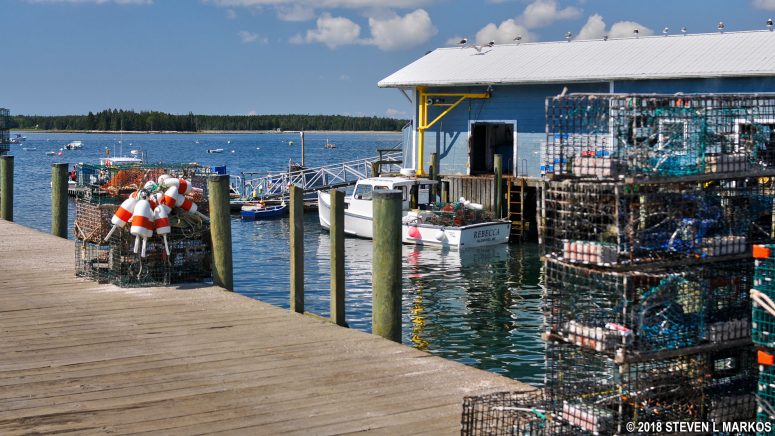While Little Cranberry Island is not part of Acadia National Park, Sea Princess Cruises in conjunction with the National Park Service operates a 3-hour Isleford Historic and Scenic Cruise to the island so that participants can disembark and walk around the town of Isleford to see what modern life is like on a small island in Maine. The cruise operates on a daily basis from late May through mid-October. There is a fee, and tickets can be purchased on the Sea Princess website. Choose TOURS from the main menu, then Acadia National Park Morning Cruise, which is usually guided by a National Park Service Ranger. Sea Princess also has an afternoon cruise to Little Cranberry that is hosted by their own guide. Other than that, the itinerary is the same.
Unlike the other National Park Service boat tours that depart from Bar Harbor where parking is next to impossible to find, the Isleford Historic and Scenic Cruise departs from Northeast Harbor at an easy to access marina with plenty of free parking in the General Parking Lot next to the tennis courts (there is a permit parking area as well). Once there, look for the Visitor Information building, one of two at the dock. Inside you can purchase a ticket or register that you have arrived if you booked a ticket online. There is no pre-registration deadline, so you can jump on board up until the boat pulls away from the dock (Sea Princess does suggest arriving a half hour before the departure time is possible).
While the tour ultimately stops at Little Cranberry Island, for me the fun was just cruising the bay and taking in the sights. The park Ranger narrates the tour all the way to the island, pointing out the owners of various mansions along the shore, discussing the lobster industry, and providing information about the natural history of the area.
The tour passes the Bear Island Lighthouse on Bear Island. A lighthouse has stood on this spot since 1839, though the current lighthouse was built in 1889. The National Park Service acquired the property in 1987 and now leases it out to a private individual who lives in the lightkeeper’s house, also built in 1889.
Another interesting feature is an osprey nest that first appeared in the 1920s; it is no longer used. Another similar nest that weighed close to a ton was removed by the Coast Guard. The bird poop basically formed a cement, and those removing it had to wear HAZMAT suits.
There are plenty of “cottages” along the shore. Of course you’d have to be very rich to call one of these a cottage, for they are mansions to everyone else.
There is a large lobster industry in Maine, and you’ll see many lobster boats in the harbor. The overfishing of cod, the main predator of lobsters, has allowed lobsters to thrive in these waters. The Ranger said that the seabed is crawling with them, yet the price of a lobster dinner, even on Mount Desert Island, is sky high. It is interesting to note that back in the early 1800s that lobster was considered a junk fish in New England and only eaten by the poor. It wasn’t until New Yorkers and Bostonians of the mid-1800s began to eat them that lobster became a delicacy. This was also around the time that refrigeration made it possible to transport live lobsters to these major cities.
The boat passes a few spots where seals like to sun themselves, but none were around when we passed by. However, I did see some in the water.
I wasn’t as thrilled about the stop on Little Cranberry Island. There is no guided tour, so participants are just left to wander on their own for an hour. You have two choices: visit the Isleford Historical Museum or walk around the island. I’m not sure if there is time to do both thoroughly. Even though the National Park Service helps sponsor the museum, I decided to spend my time exploring. If you don’t get back before the boat departs, you will be left behind. Water taxis service the island, but you’ll have to foot the bill for one.
There are no shops other than a small general store at the local post office building, but there is a church that was built in 1898 that is open.
The most interesting feature of the church is a stained glass window that is dedicated to local residents who fought in the War for the Union. This is one of the many names for what we now call the Civil War, a term that wasn’t widely used until the early 1900s.

Stained glass window dedicated to Isleford Civil War veterans inside the Isleford Congregational Church on Little Cranberry Island in Maine
There are around eighty permanent residents on Little Cranberry Island. Fishing is the primary industry, particularly lobstering. Roughly a third of the residents work as lobstermen. The dock is populated with lobster boats, and traps are piled high everywhere you look.
With a few exceptions, use of any photograph on the National Park Planner website requires a paid Royalty Free Editorial Use License or Commercial Use License. See the Photo Usage page for details.
Last updated on July 17, 2025




















